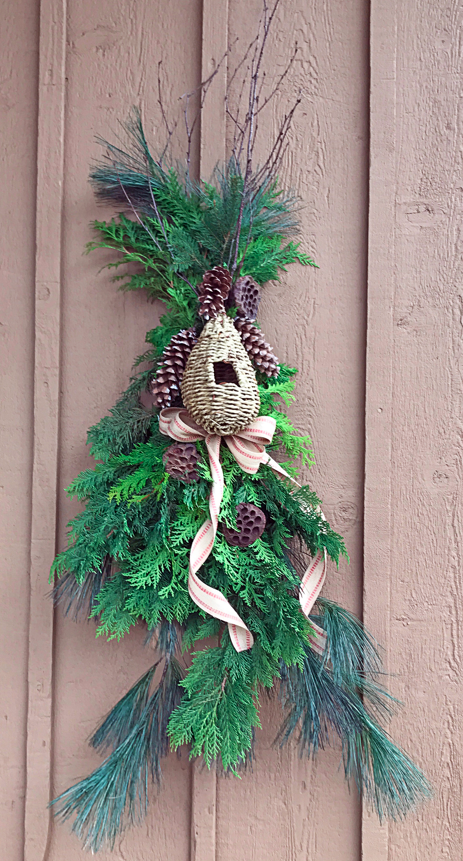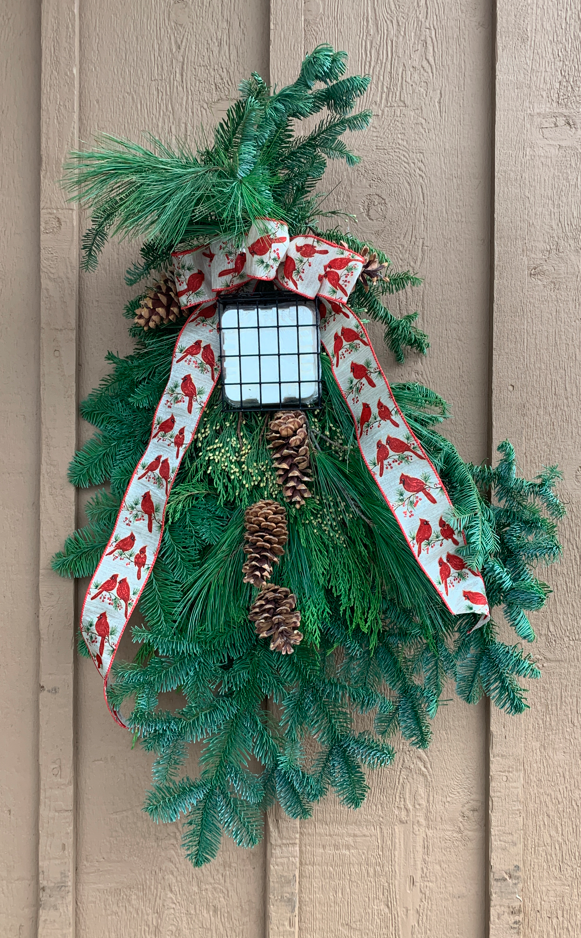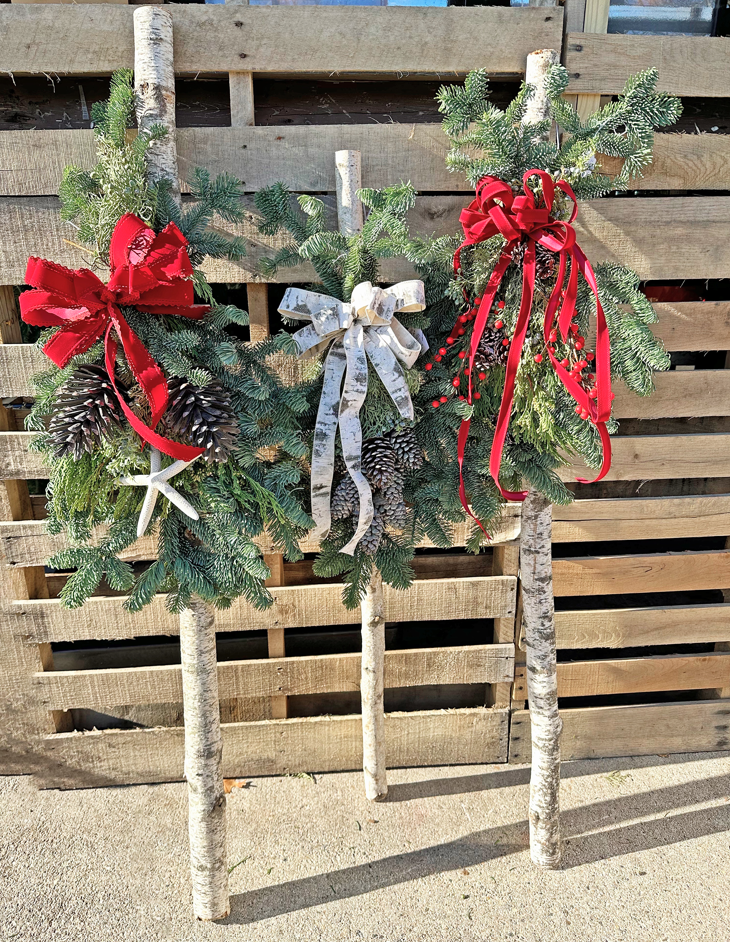When it comes to Christmas decorations, there is both value and boredom in the traditional.
For centuries, wreaths have been used for holidays and other celebrations, and these circular shapes are often the first thing that our customers purchase and display the weekend after Thanksgiving.
Although there is always appreciation for the conventional wreath, many welcome something new, and a creative approach to swags offers this to holiday shoppers.
A swag is made by piling several boughs and stems of greens on top of each other, secured with a wire at the top, and then adding cones, ornaments or other embellishments, along with a bow.
The longest stem is put down first, followed by shorter and shorter pieces for a layered appearance. The most attractive arrangements use an assortment of colors and textures of greens, and smaller pieces can be attached on top to hide the cut stems.
Swags are more versatile than a wreath. They can be hung in the center of a windowed door so that the view out isn’t obscured. Swags can be hung on either side of an entry, from a lamppost or in the narrow space between two garage doors.
For IGCs, swags can be made using materials — fresh or artificial — that were overstocked, aren’t selling or are random leftovers from Christmases past.
But beyond their functionality for ourselves and our customers, these bundles of greens can also be made different and delightful in several ways.
Swags as bird feeding and shelter


Left: A swag with a shelter for birds. Right: A swag with suet for birds.
A swag can do double duty as a bird feeder or refuge from winter weather. If your IGC sells bird supplies, you already have the ingredients to create this kind of swag.
Wire a cage that holds a block of suet just under the bow. Small pocket bird houses can be placed on a swag, which is charming and a possible place for birds to escape the weather.
These arrangements can be left out well beyond Christmas, although some people choose to remove the red bows at the end of February.
Swags as porch poles and brooms


By attaching a swag to the top of a birch pole, you have a charming decoration that can lean against a wall, hang under a porch light or attach to the side of a house.
Tina Bemis, who runs multiple craft classes at Bemis Farms Nursery in central Massachusetts, used this idea for a workshop recently. She gave the Make-A-Porch-Pole attendees the option of placing the swag near the top of the pole or fastening it at the bottom, creating a “solstice broom" to sweep out the darkest nights and welcome the return to longer days.
In addition to hanging a porch pole or leaning it against the side of a house, these can be stuck into containers filled with greens. Use soil or floral foam to fill the container, push the pole into it and secure it with waterproof tape to four sides before filling with fresh greens.
Make swags personal
Instead of the usual cones, berries and ornaments, swags can be decorated with personal items that make them one-of-a-kind.
For a workshop, attendees can bring in small items that are special to them: toys from when their children were young, small cups from miniature tea sets or even old athletic metals.
We did a workshop at Hyannis Country Garden (on Cape Cod) where people brought in photocopies of pictures of loved ones. Those copies were put through our laminating machine, and a hole was punched at the top so that they could be attached to the swag.
Some attendees made swags using artificial materials so this memory-making decoration could be used year after year. Others used natural materials and planned to remove the laminated pictures after the holidays, so they could create a new swag every year.
When offering this workshop, be sure to stress that color copies of the photos need to be used; never laminate an original photograph.
Custom swags
Any of the ideas above can be used to create merchandise for sale on the store floor as well as for workshops.
For pricing, add up the retail cost of the ingredients and then tack on at least $20 to $30 for custom creation pricing. One-of-a-kind pieces have more value.
C.L. Fornari is a speaker, writer and radio/podcast host who has worked at Hyannis Country Garden, an IGC on Cape Cod, for nearly 30 years. She has her audiences convinced that C.L. stands for “Compost Lover.” Learn more at GardenLady.com.
Latest from Garden Center
- Society of American Florists accepting entries for 2025 Marketer of the Year Contest
- Sustainabloom launches Wholesale Nickel Program to support floriculture sustainability
- American Horticultural Society welcomes five new board members
- Color Orchids acquires Floricultura Pacific, becoming largest orchid supplier in U.S.
- American Floral Endowment establishes Demaree Family Floriculture Advancement Fund
- The Growth Industry Episode 3: Across the Pond with Neville Stein
- Proven Winners offers Certified Garden Center Training for staff education
- Digging In Association hosts inaugural Platinum Trowel Awards at winter conference





